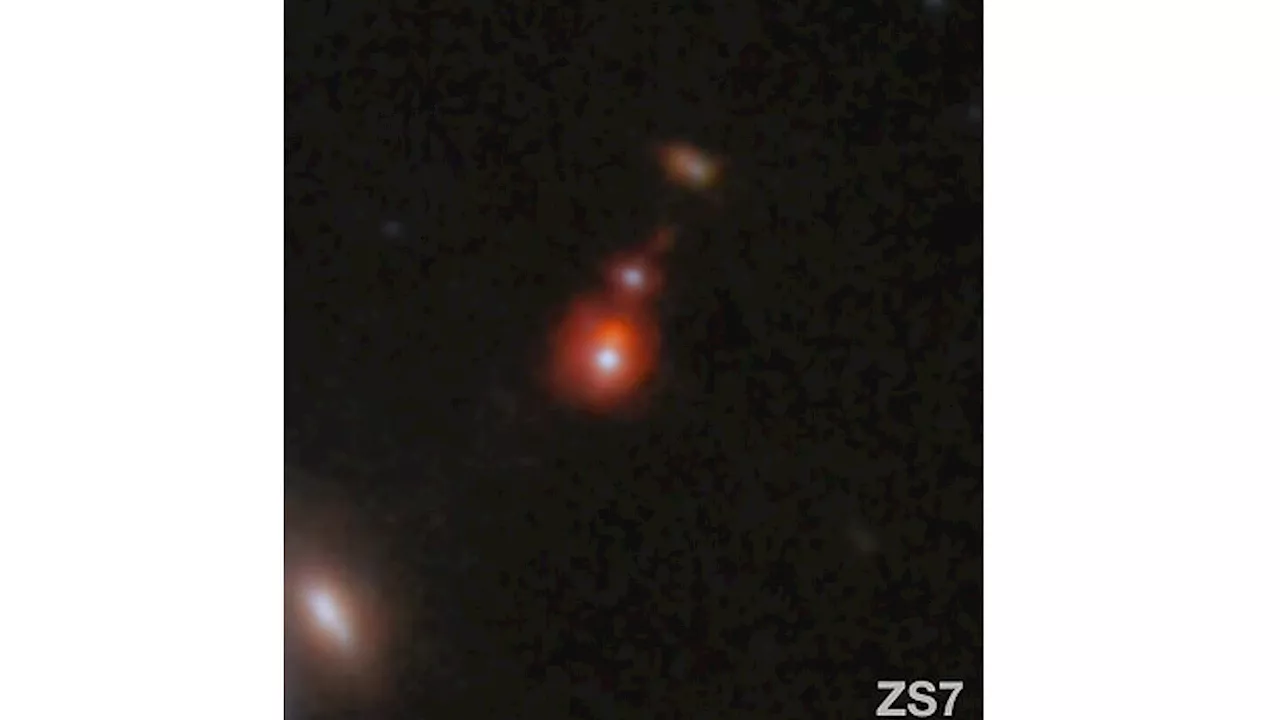The Webb Space Telescope has discovered the earliest known merger of black holes. Scientists reported Thursday that these two gigantic and distant black holes and their galaxies consolidated just 740 million years after the universe-forming Big Bang. One black hole is 50 million times more massive than our sun.
This image released by NASA shows the ZS7 galaxy system, revealing the ionized hydrogen emission in orange and the doubly ionized oxygen emission in dark red. These two gigantic black holes and their galaxies consolidated just 740 million years after the universe-forming Big Bang. It’s the most distant detection ever made of merging black holes, scientists reported Thursday.
One black hole is 50 million times more massive than our sun. The other is thought to be similar in size, but is buried in dense gas, which makes it harder to measure.The latest findings, published in the Monthly Notices of the Royal Astronomical Society, suggest mergers are how black holes can grow so rapidly — “even at cosmic dawn,” said lead author Hannah Ubler of the University of Cambridge.
“Massive black holes have been shaping the evolution of galaxies from the very beginning,” Ubler said in a statement. Launched in 2021 as the eventual successor to NASA’s Hubble Space Telescope, Webb is the biggest and most powerful observatory ever sent into space. A joint U.S.-European project, the infrared observatory surveys the universe from a location 1 million miles from Earth.The Associated Press Health and Science Department receives support from the Howard Hughes Medical Institute’s Science and Educational Media Group. The AP is solely responsible for all content.
United States Latest News, United States Headlines
Similar News:You can also read news stories similar to this one that we have collected from other news sources.
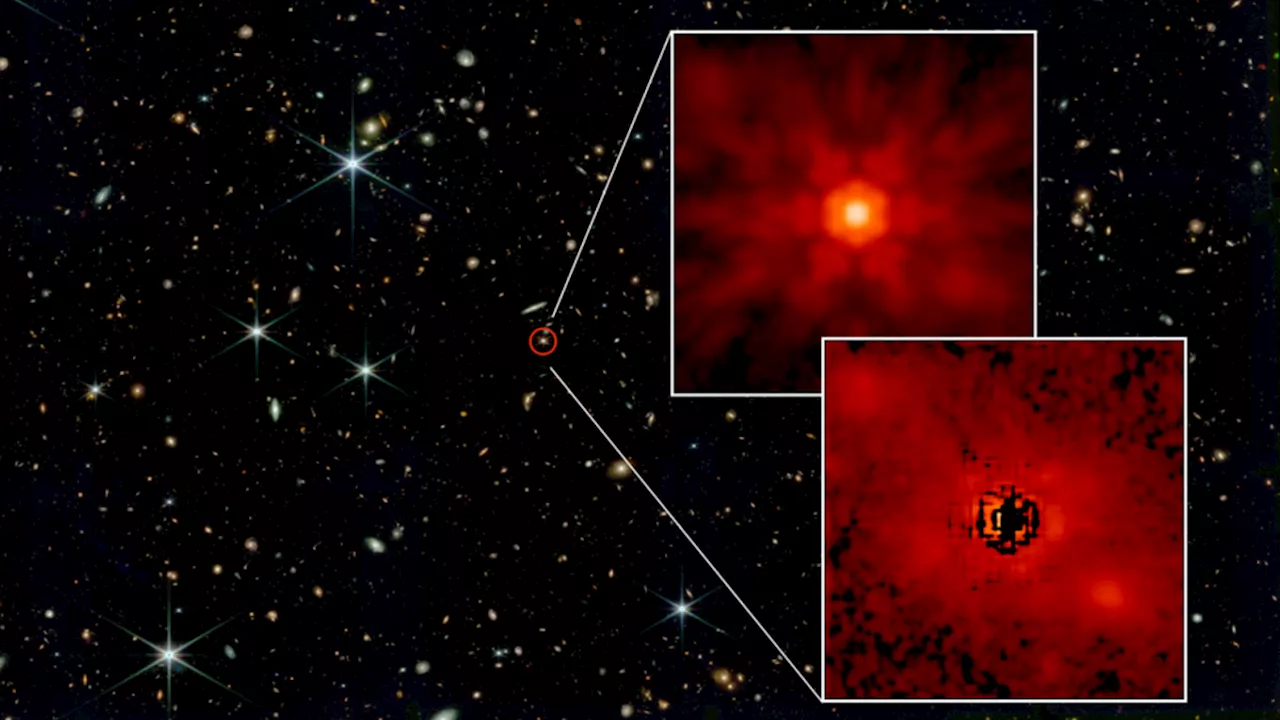 James Webb Space Telescope suggests supermassive black holes grew from heavy cosmic 'seeds'Robert Lea is a science journalist in the U.K. whose articles have been published in Physics World, New Scientist, Astronomy Magazine, All About Space, Newsweek and ZME Science. He also writes about science communication for Elsevier and the European Journal of Physics. Rob holds a bachelor of science degree in physics and astronomy from the U.K.
James Webb Space Telescope suggests supermassive black holes grew from heavy cosmic 'seeds'Robert Lea is a science journalist in the U.K. whose articles have been published in Physics World, New Scientist, Astronomy Magazine, All About Space, Newsweek and ZME Science. He also writes about science communication for Elsevier and the European Journal of Physics. Rob holds a bachelor of science degree in physics and astronomy from the U.K.
Read more »
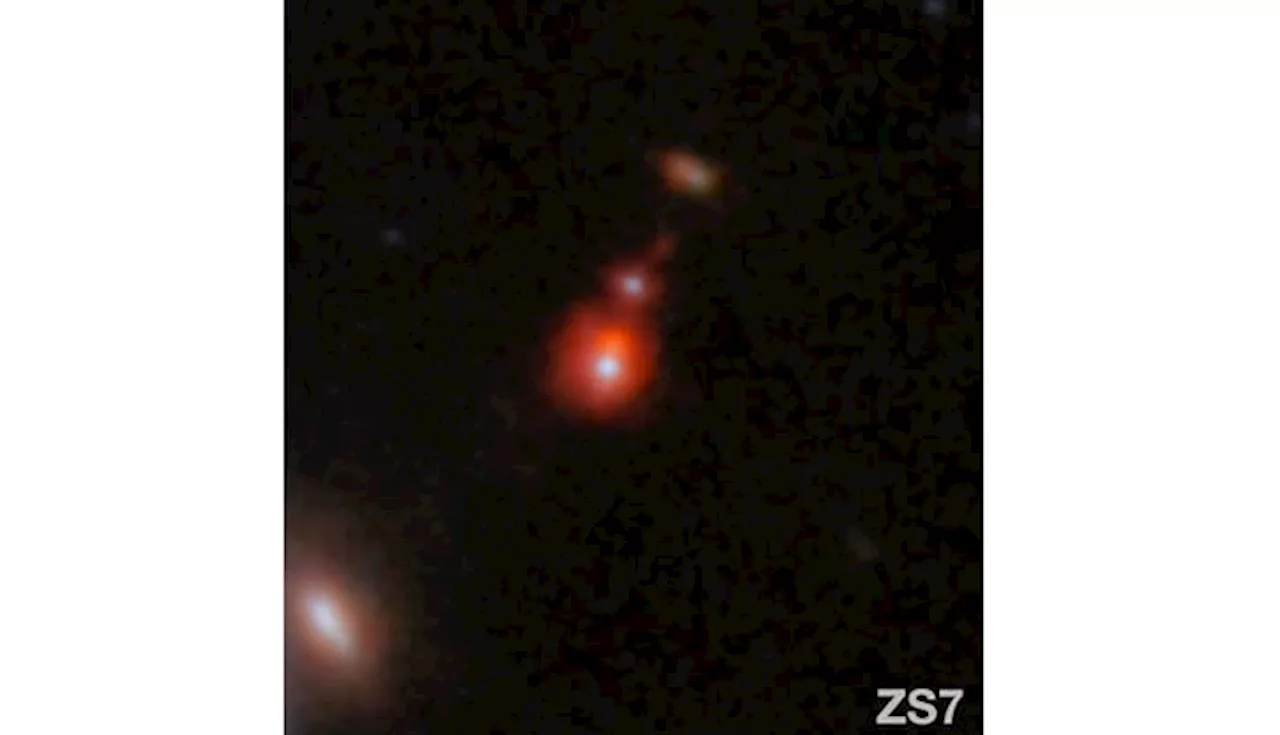 Webb telescope uncovers merger of two massive black holes from early universeThe Webb Space Telescope has discovered the earliest known merger of black holes.
Webb telescope uncovers merger of two massive black holes from early universeThe Webb Space Telescope has discovered the earliest known merger of black holes.
Read more »
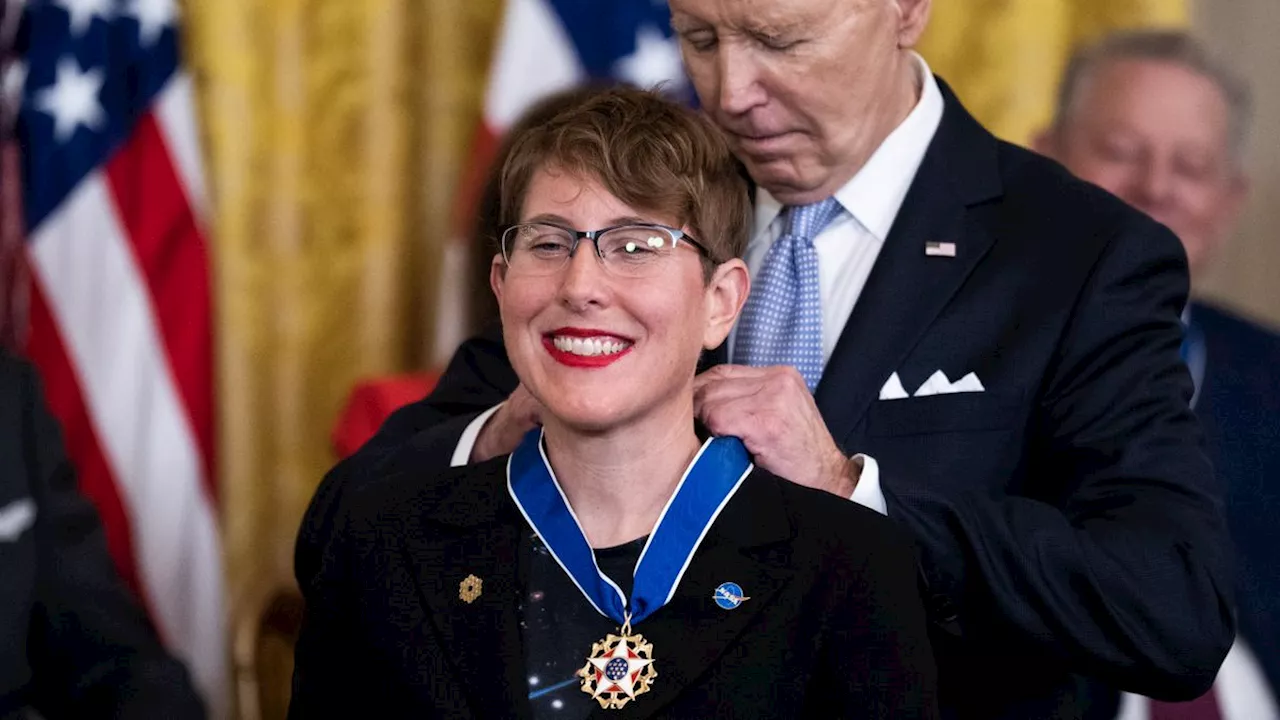 James Webb Space Telescope chief scientist Jane Rigby receives highest US civilian awardMonisha Ravisetti is Space.com's Astronomy Editor. She covers black holes, star explosions, gravitational waves, exoplanet discoveries and other enigmas hidden across the fabric of space and time. Previously, she was a science writer at CNET, and before that, reported for The Academic Times.
James Webb Space Telescope chief scientist Jane Rigby receives highest US civilian awardMonisha Ravisetti is Space.com's Astronomy Editor. She covers black holes, star explosions, gravitational waves, exoplanet discoveries and other enigmas hidden across the fabric of space and time. Previously, she was a science writer at CNET, and before that, reported for The Academic Times.
Read more »
 Webb space telescope detects Mach 7 speed winds on a ‘2-faced planet’Scientists used Webb's MIRI (Mid-Infrared Instrument) to monitor light from the WASP-43 system every 10 seconds for more than 24 hours.
Webb space telescope detects Mach 7 speed winds on a ‘2-faced planet’Scientists used Webb's MIRI (Mid-Infrared Instrument) to monitor light from the WASP-43 system every 10 seconds for more than 24 hours.
Read more »
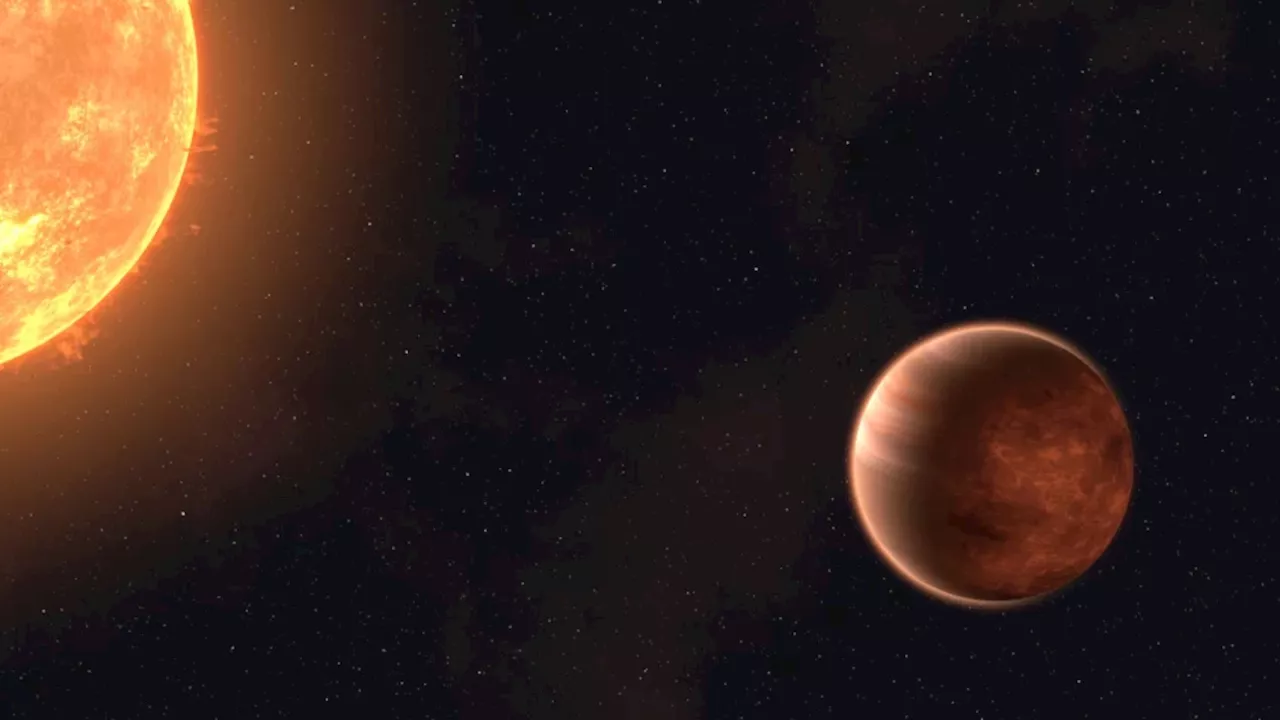 James Webb Space Telescope forecasts clouds of melted rock on this blisteringly hot exoplanetRobert Lea is a science journalist in the U.K. whose articles have been published in Physics World, New Scientist, Astronomy Magazine, All About Space, Newsweek and ZME Science. He also writes about science communication for Elsevier and the European Journal of Physics. Rob holds a bachelor of science degree in physics and astronomy from the U.K.
James Webb Space Telescope forecasts clouds of melted rock on this blisteringly hot exoplanetRobert Lea is a science journalist in the U.K. whose articles have been published in Physics World, New Scientist, Astronomy Magazine, All About Space, Newsweek and ZME Science. He also writes about science communication for Elsevier and the European Journal of Physics. Rob holds a bachelor of science degree in physics and astronomy from the U.K.
Read more »
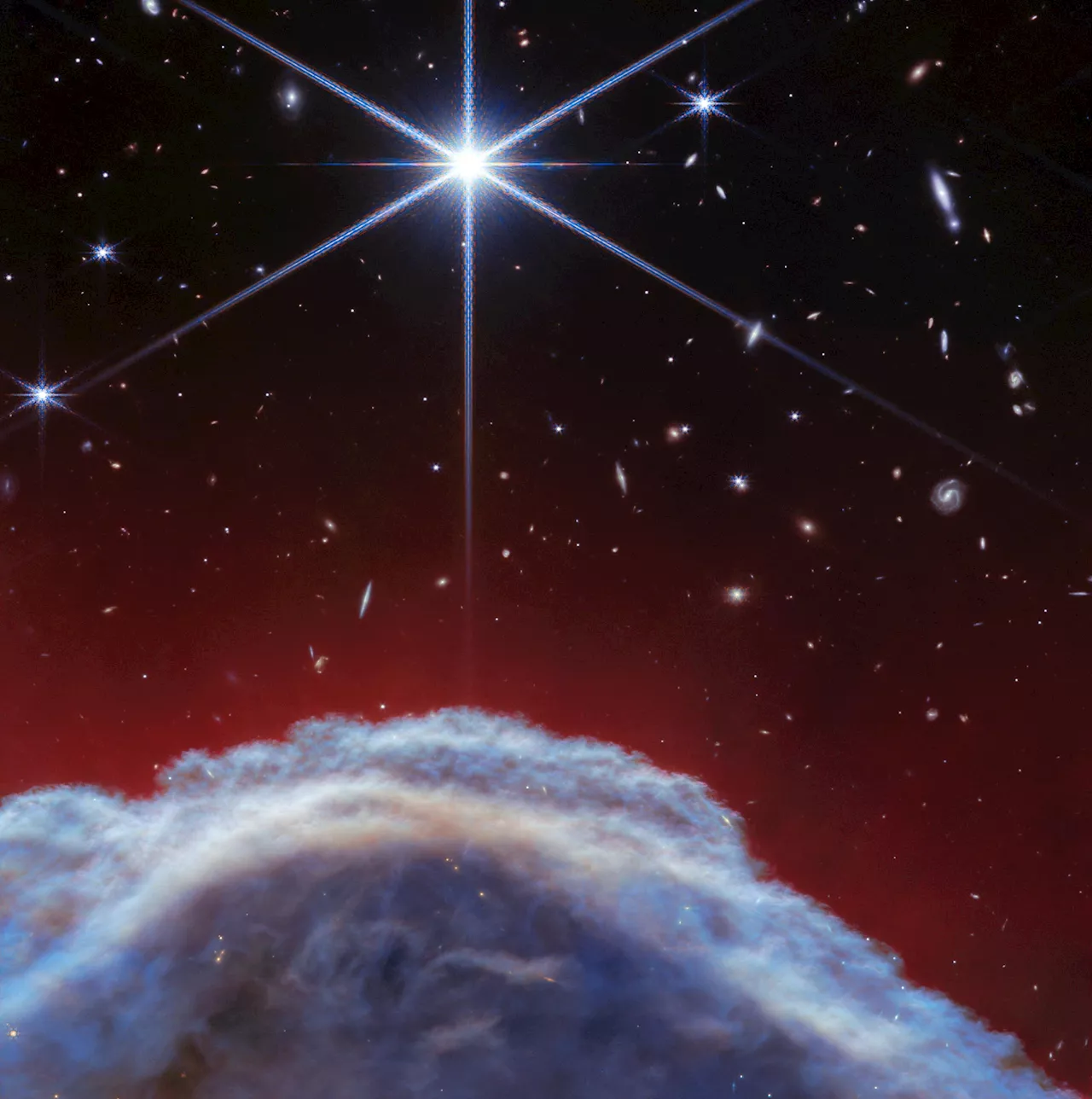 Webb Space Telescope Reveals Hidden Layers of the Iconic Horsehead NebulaScience, Space and Technology News 2024
Webb Space Telescope Reveals Hidden Layers of the Iconic Horsehead NebulaScience, Space and Technology News 2024
Read more »
